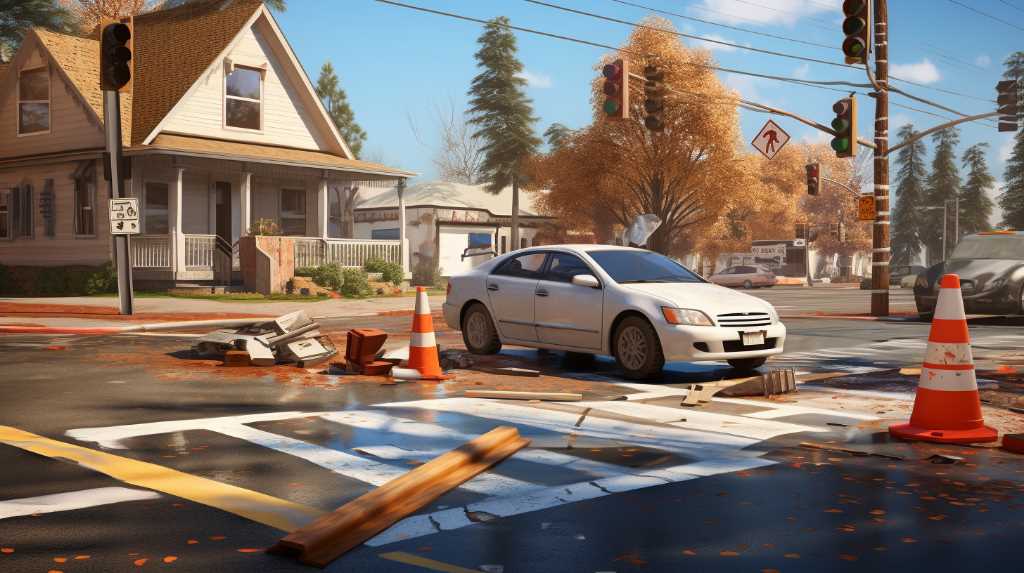
If both drivers are at fault in a car crash, figuring out who pays for what can be complicated. Some places use ‘comparative negligence,’ which means each driver pays based on how much they were at fault. For example, if you were 30% at fault, you might pay 30% of the other driver’s damages.
Other places have ‘contributory negligence’ rules, where if you’re even a little bit at fault, you might not get any money from the other driver at all. This is why it’s really important to look into the accident carefully. The results can affect insurance claims and how much money someone might get in a settlement or from a court.
It’s like piecing together a puzzle to see the full picture of what happened and who should be responsible for the costs.
Understanding Comparative Negligence
Comparative negligence is a way to figure out who is at fault in a car crash, considering how much each person involved contributed to the accident. It’s important because it means that if you’re partly to blame for the crash, the money you get will be less, based on how much the accident was your fault.
When deciding who is at fault, courts or juries look closely at things like how damaged the cars are, what witnesses say, and the traffic laws. This fair method makes sure that people get money that matches how responsible they actually were for the crash.
It also sends a message that if you drive carelessly, you’ll have to pay for it. This helps to keep the roads safer because it reminds everyone that their actions have financial consequences.
Exploring Contributory Negligence
In car crashes involving more than one vehicle, people often don’t pay attention to contributory negligence. This rule means that if you are even a little bit at fault, you can’t get any money for damages. For example, if you didn’t use your turn signal or you were driving a little over the speed limit and these things played a role in the crash, you can’t get compensated.
The strictness of this rule aims to make people more careful and follow traffic laws closely. But it can also lead to very tough situations. That’s why having a good lawyer is crucial. They can help make sure the blame is placed fairly and you’re treated right in these complex situations.
Determining Fault Percentage
Figuring out who is at fault in a car crash requires careful work to determine the level of blame for each person involved. This is crucial because it ultimately determines who is responsible for covering the damages. To achieve this, a thorough examination of the crash reports, witness testimonies, and any available video footage is necessary. Additionally, recreating the accident and assessing whether the drivers adhered to traffic laws is essential. By evaluating how well each person took precautions to avoid the crash and their contribution to the incident, a fair distribution of blame can be determined. This meticulous approach ensures that insurance claims are settled fairly and accurately reflect the actual events of the crash.
Insurance Claims Process
When two drivers are both at fault in a car crash, they each need to tell their own insurance company about what happened. It’s really important that they take clear photos and get statements from anyone who saw the accident because this helps figure out who was more at fault.
The insurance companies look into the crash carefully, and the laws of the place where it happened will guide them on how to decide each driver’s share of the blame. This decision is very important because it affects how much money each driver might get to fix their car or for other damages.
Drivers should be open and give all the details to their insurance company and work with them. This helps make sure the insurance company can make a fair decision about the claim.
Legal Implications and Settlements
When two drivers share the blame for a car crash, figuring out who pays for what is complex but critical. Courts look at how much each person is at fault and split the bill accordingly. This means looking closely at the accident details to decide who bears what percentage of the blame. The amount of money each person can get back depends on this.
Lawyers work hard to show that their client is less to blame and argue against the other side’s claims. This is to either get more money for their client or to pay less. For a fair payment, it’s important to have strong evidence that shows the other person was more at fault. Good legal knowledge is key in these tough talks to make sure everyone gets what they deserve.
Conclusion
When two drivers are both to blame for a car crash, figuring out who pays for what involves using rules called comparative and contributory negligence.
Basically, this means they look at how much each person’s actions led to the accident and then decide who should pay what based on that.
It’s really important for everyone involved to get how this works. That’s because it can make a big difference in how much money you get from insurance or if you go to court.
It’s like putting together a puzzle where each piece is a fact about the accident. Getting it right helps make sure everyone is treated fairly.